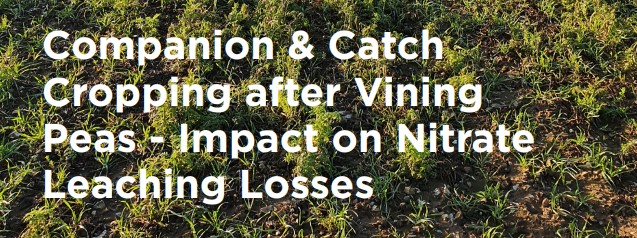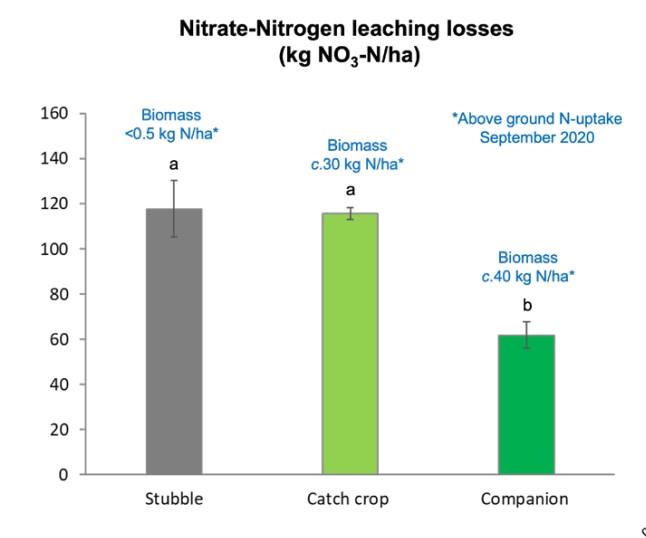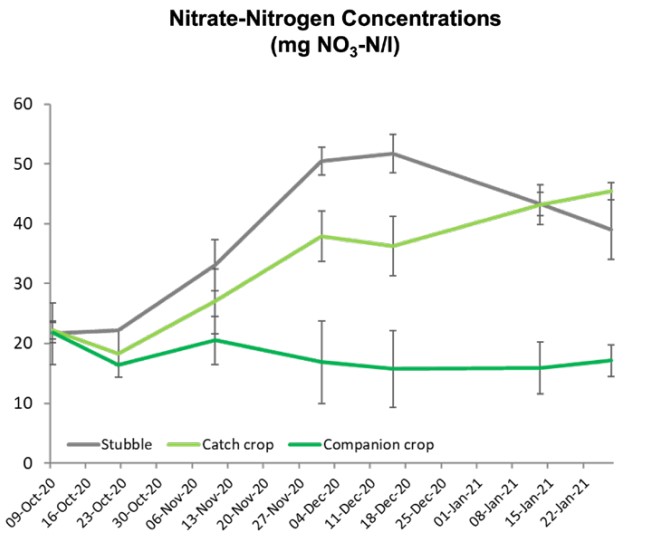Companion & Catch Cropping after Vining Peas - Impact on Nitrate Leaching Losses

- Growing peas is associated with higher than average nitrate leaching losses after harvest.
- Establishing a catch crop early (i.e. end of June) after vining peas and before drilling winter wheat can be effective at reducing nitrate leaching losses; less is known about the impact of companion cropping
THE PROJECT
- The main objectives of the project are to determine:
- The impacts of contrasting over-winter ground cover treatments on nitrate leaching losses after vining peas. Ground cover treatments include:
- A catch crop
- A companion crop (i.e. winter wheat direct drilled into the catch crop)
- No ground cover after peas
- The impacts of catch and companion cropping on the nitrogen fertiliser requirement and the yield of the following winter wheat crop
RESULTS AND IMPLICATIONS
- Overwinter nitrate leaching losses from both the stubble and catch crop were high at c.120 kg NO₃-N/ha; the companion crop reduced losses by 50% (to c.60 kg NO₃-N/ha).
- On the stubble treatment nitrate-N concentrations peaked by mid-December (max. c.50 mg NO₃-N/l); whilst on the catch crop treatment nitrate concentrations continued to increase throughout the measurement period. In contrast nitrate concentrations on the companion crop treatment remained constant at c.18 mg NO₃-N/l.
- Ground cover treatments had no effect on the nitrogen fertiliser requirement or yield of the following winter wheat crops.
- Initial results suggest that establishing a companion crop, in August, following vining pea harvest can be effective at reducing nitrate leaching losses whilst having no detrimental impact on crop yields

Figure 1: Mean total overwinter nitrate leachate losses (kg NO₃-N/ha), different letters above bars indicate significant differences between treatments (P<0.05)

Figure 2: Mean nitrate concentrations (NO₃-N mg/l) at each sampling event (Right). Both the cover crop and companion crop mix was drilled at 15 kg/ha and consisted of: Buckwheat (30%), Linseed (31%), Phacelia (15%), Sunflower (10%), Crimson clover (4%) and red clover (2%).
NEXT STEPS
The project is continuing into a second year, to investigate the legacy effects of catch crop and companion cropping treatments on nitrate leaching (overwinter 2020/2021) and winter wheat harvest (2022).
This work is funded by Anglian Water, with the seed mix kindly supplied by King Crops and analysis of biomass carried out by Frontier.
Disclaimer

